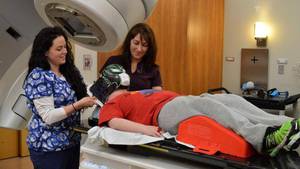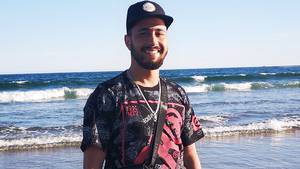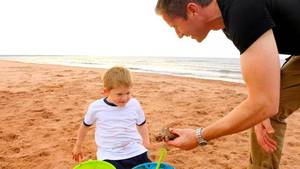Based in the QEII Health Sciences Centre’s Abbie J. Lane building, the Nova Scotia Early Psychosis Program (NSEPP) helps young people and their families to detect treatable brain disorders and start their recovery.
“Psychosis can really derail people’s lives,” says Dr. Jason Morrison, a psychiatrist with NSEPP. “It typically strikes young people — they’re in school, engaged with friends, maybe getting into romantic relationships — and the illness tends to occur right when this is happening.”
Currently, no blood test or MRI scan can detect psychosis, so the program looks for the disease’s distinct symptoms: withdrawal from friends and family; unreasonable levels of suspicion, tension or irritability; difficulty sleeping; hearing or seeing things that are not there; confused thought; and extreme mood swings.
Dr. Michael Teehan, also a psychiatrist with the program, says researchers discovered psychosis was treatable with medication about 50 years ago — and they did so accidentally.
“We worked backwards from what the medication does to try and figure out what is going on in the brain. That’s still the cutting-edge, which is a humbling reality. There are a lot of leads, but nothing that is able to be used clinically.”
While the words psychosis and schizophrenia are sometimes used interchangeably, there is a distinction. Dr. Teehan says schizophrenia causes psychosis, but so do other things.
“To be able to apply the other treatments, you really need to stabilize the person, and our best shot at that is providing the right tailored treatment of pharmacology to that individual. When they’re stable enough, we can get into psycho-education, vocational retraining, return to school, or return to work,” he says.
Dr. Phil Tibbo, program director of NSEPP, says they focus on treating people aged 12 to 35. He says about a third of people they treat recover to the point where they only need to check in with their family doctor occasionally, but otherwise resume their lives. About a third need secondary care from mental health teams, but it’s not intensive. A third of people do need intensive care, often in care facilities or outpatient clinics.
Sara Lamb and her husband Philip Moscovitch came to the program when their 21-year-old son began acting erratically.
“Things just didn’t seem to be coming together for our son in ways that were kind of hard to distinguish from many other young adults trying to find themselves,” she says.
Those signs included him struggling to hold a job and regularly changing his group of friends.
“Also, I think on a personal level, a feeling of not being quite there,” Philip says.
Sara is a psychotherapist, but did not have experience working with this kind of mental health disorder.
“I think the term psychosis was ambiguous for us at first. We were trying to wrap our heads around what that means,” she says.
“I remember thinking ‘Early Psychosis Program’ sounded terrible. I feel embarrassed now, but that’s what I thought,” Philip says.
“A lot of people use the word ‘psychotic’ to mean crazed killer, so when you hear the term applied to your kid, it feels really scary,” Sara adds.
But as they started to learn from the program, they saw it more concretely. The fear lessened as their understanding grew.
“I think because we all have this stigma and we all have this disbelief when it’s happening, I would say — reach out for help,” Sara says. “If something seems not quite right with your child, trust that.”
With their son’s permission, they were invited into some therapy sessions. The program offers support in different settings, including gardening, basketball and drama therapy.
Their son was in an acute phase when he was accepted into the program two years ago and needed to be in the hospital for a period. He met with a psychiatrist every other day, a pace that gradually slowed. He’s in a “support and check-in” phase now, attending monthly appointments with a psychiatrist and otherwise rebuilding his life.
His parents meet monthly with a family support group.
“One of the things you learn when you’re part of that group is just how many paths to recovery there are, and how individual they are,” Sara says.
“People can recover and they do recover,” Philip adds. “There is a lot of good work being done to support people in recovery. It’s not a hopeless thing.”








